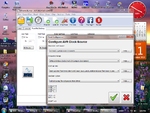ismbn
Full Member level 3

- Joined
- Feb 11, 2012
- Messages
- 160
- Helped
- 4
- Reputation
- 8
- Reaction score
- 4
- Trophy points
- 1,308
- Location
- Mumbai. india
- Activity points
- 2,444
@madhu
Sir
1) I think understand Brown-out detection i think it will manage the supply voltage if any fluctuation is happen am i correct?
2) should i do this pin 0 or 1 sir
Ismail
Sir
1) I think understand Brown-out detection i think it will manage the supply voltage if any fluctuation is happen am i correct?
2) should i do this pin 0 or 1 sir
Ismail


